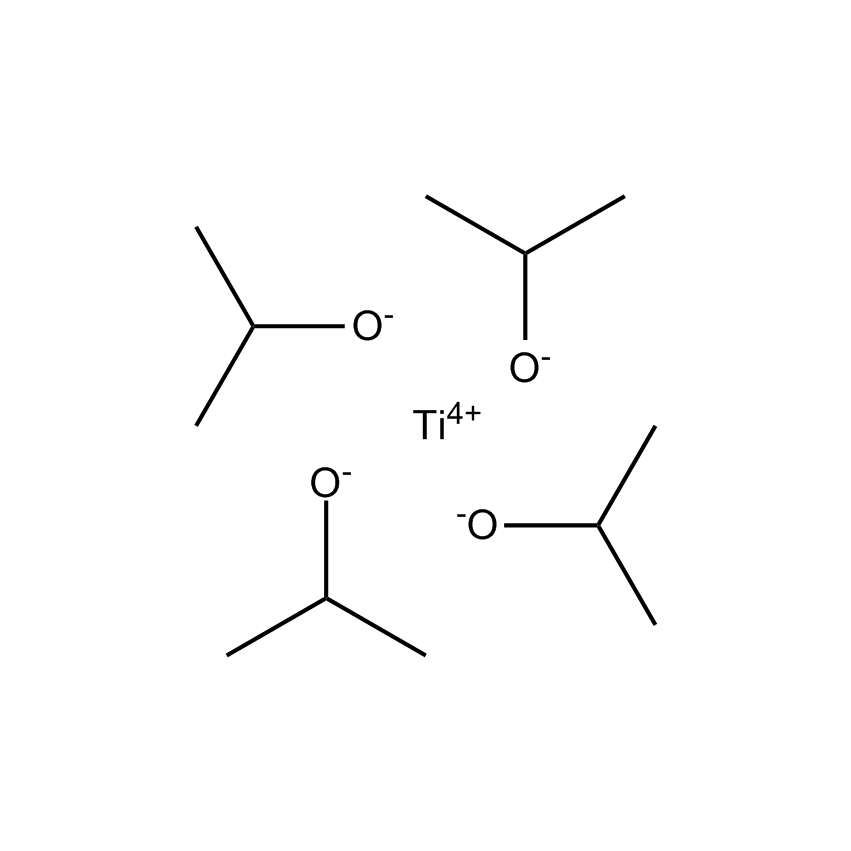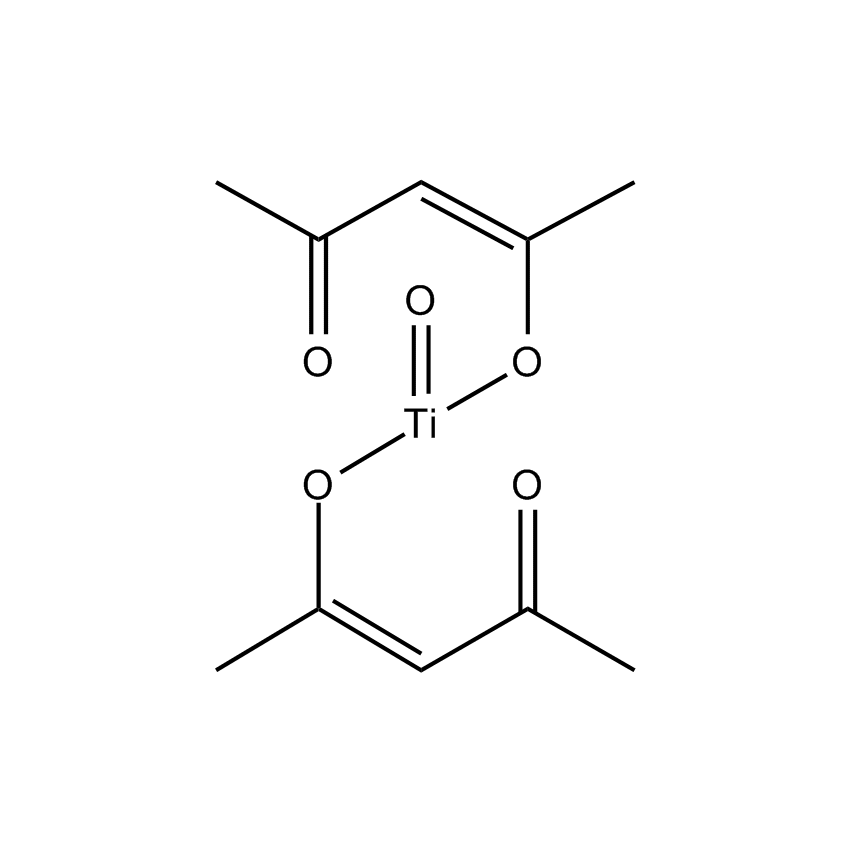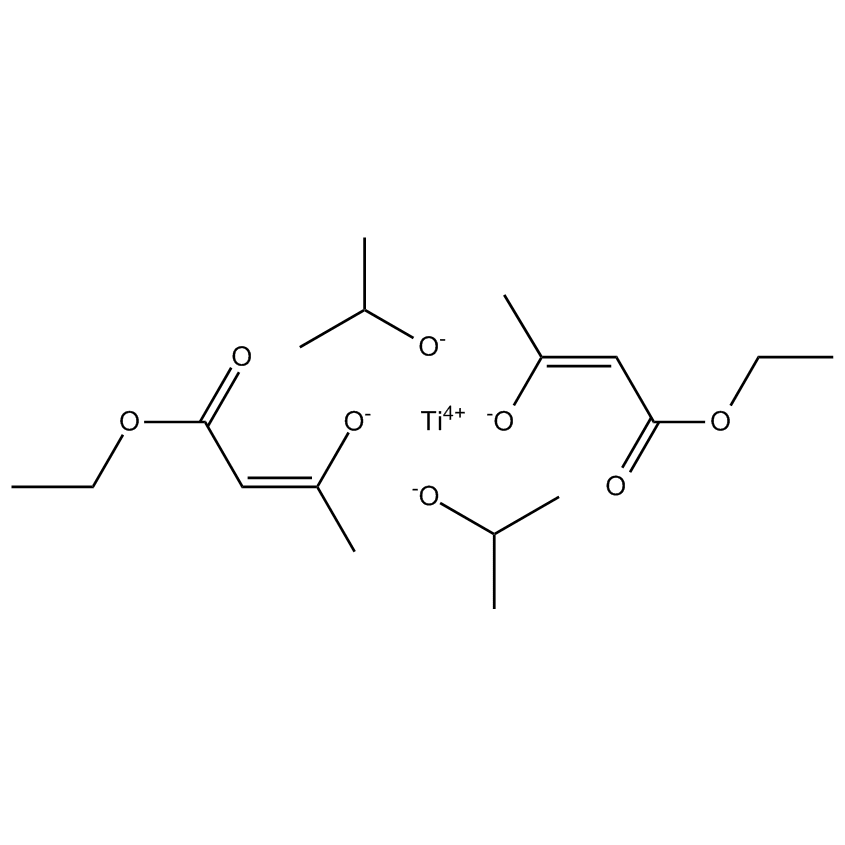Additional Properties
- Einecs Number 208-909-6
- HMIS 2-3-1-X
- Molecular Formula C12H28O4Ti
- Molecular Weight (g/mol) 284.25
- TSCA Yes
- Delta H Vaporization (kJ/mol) 14.7 kcal/mole
- Boiling Point (˚C/mmHg) 58/1
- Density (g/mL) 0.937
- Flash Point (˚C) 25 °C
- Melting Point (˚C) 15-19°
- Refractive Index @ 20˚C 1.4654
- Viscosity at 25 ˚C (cSt) 2
Application
Vapor phase pyrolysis gives oxide.1
Yields coatings of barium titanate in combination with Ba(OR)2.2
Utilized in spray pyrolysis synthesis of BaTiO3 and SrTiO3.3
Catalyst for rearrangement4 and cleavage5 of epoxy alcohols.
Catalyst for cyclization of ?-amino acids to lactams.6
In combination with lead alkyls yields PZT films by MOCVD.7
Review of reactions in combination with Grignard reagents and various organic substrates.8
In combination with triethylamine and trimethylchlorosilane extends aldehydes to two carbons to enals.9
Fieser
F&F: Vol. 6, p. 11; Vol. 10, p. 404; Vol. 11, p. 3724 Vol. 12, p. 19, 504; Vol. 13, p. 13; Vol. 14, p. 247, 311; Vol. 16, p. 339; Vol. 17, p. 347.
Reference
1. Nandi, M. et al. Inorg. Chem. 1990, 29, 3065.
2. Scuhoff, L. U.S. Patent 3,002,861, 1961.
3. Nonaka, S. et al. J. Mater. Res. 1991, 6, 1750.
4. Morgans, D. et al. J. Am. Chem. Soc. 1981, 103, 462.
5. Caron, M. et al. J. Org. Chem. 1985, 50, 1557.
6. Mader, M. et al. Tetrahedron Lett. 1988, 29, 3049.
7. Kwak, B. S. et al. Appl. Phys. Lett. 1988, 53, 1702.
8. Wolan, A.; Six, Y. Tetrahedron 2010, 66, 15.
9. Kagana, N. et al. Tetrahedron Lett. 2010, 51, 482.
Safety
ALD Material
Atomic layer deposition (ALD) is a chemically self-limiting deposition technique that is based on the sequential use of a gaseous chemical process. A thin film (as fine as -0.1 Å per cycle) results from repeating the deposition sequence as many times as needed to reach a certain thickness. The major characteristic of the films is the resulting conformality and the controlled deposition manner. Precursor selection is key in ALD processes, namely finding molecules which will have enough reactivity to produce the desired films yet are stable enough to be handled and safely delivered to the reaction chamber.
Titanium isopropoxide; Isopropyltitanate; Titanium tetra(2-propoxide); Tetraisopropyl titanate




